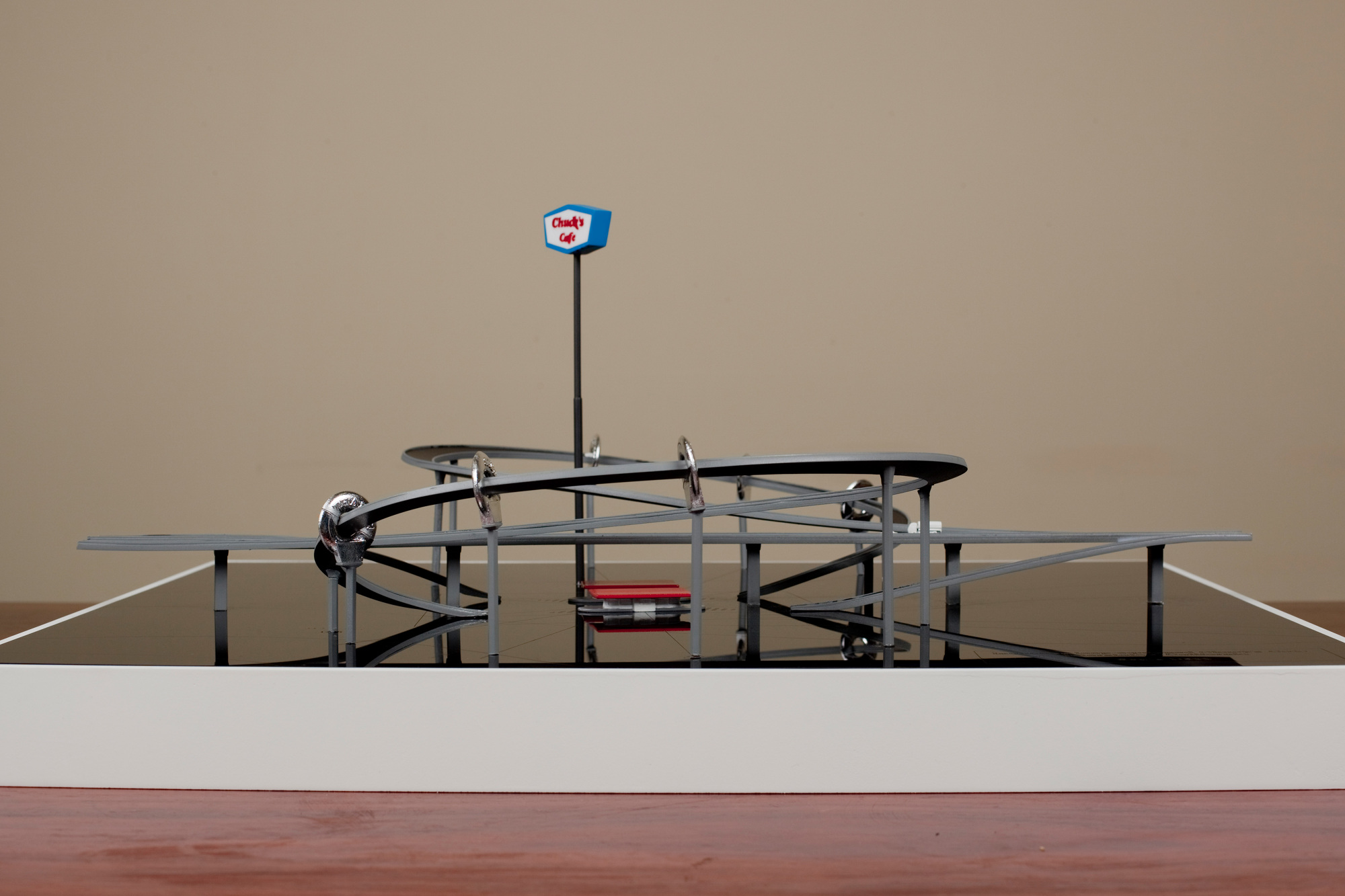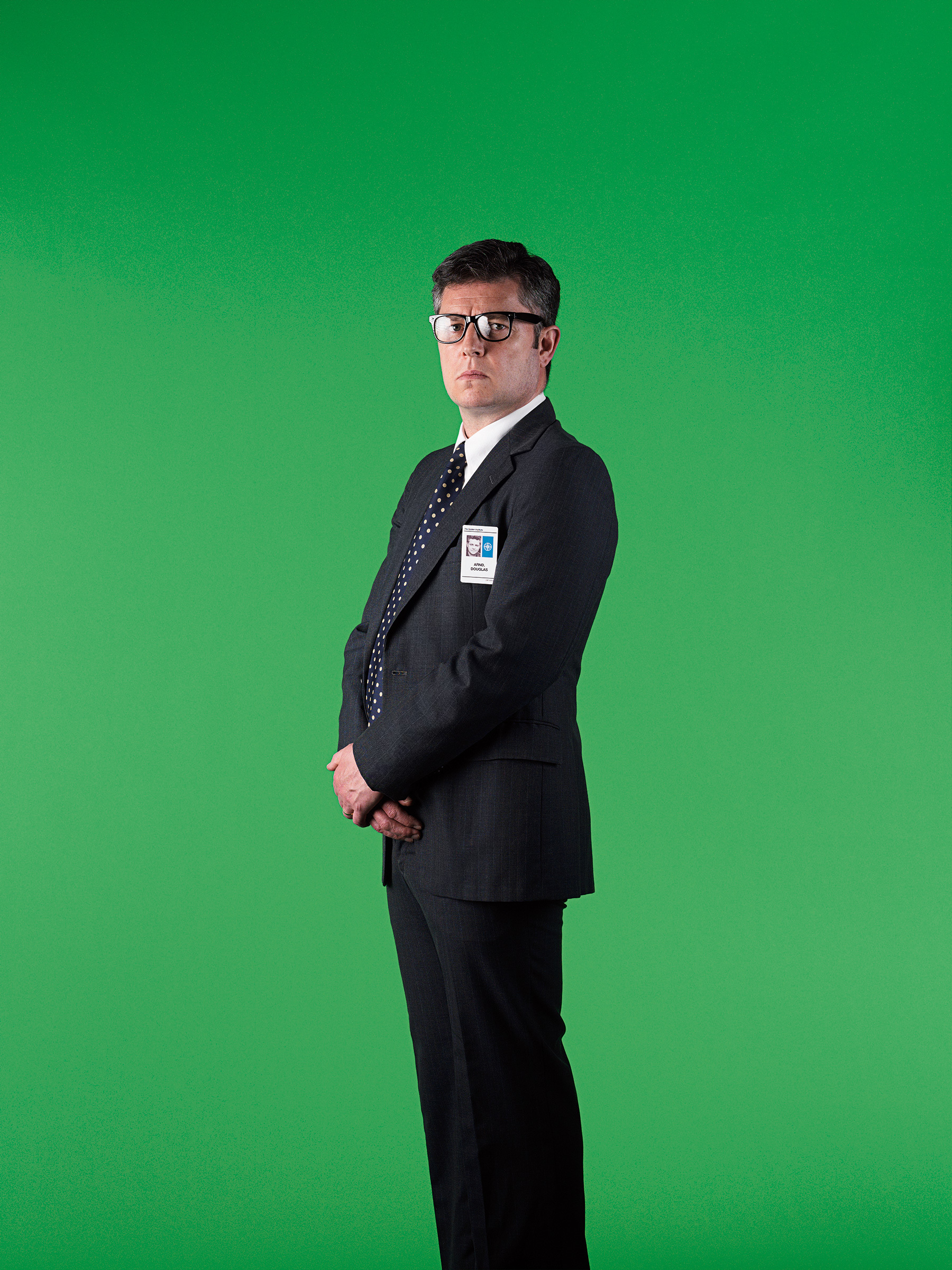2009
HD video (6:19min), architectural models, C-Type print (1200mm x 800mm)
For every future that happens, many others are being foregone. The world which we live in is the result of countless choices in the past. Many aspects of our world would potentially look very different if, at crucial moments, other paths had been chosen.The 1980 US presidential election represents such a crucial moment in regard to energy technologies. While Jimmy Carter had a declared interest in renewable energy sources the victorious Ronald Ragean quickly rolled back such efforts and embraced a future based on fossil fuels.
The Golden Institute is situated in an alternate past where president Carter won the election and used his second term to advance renewable energy efforts on a scale comparable to the Apollo program. Headed by Douglas Arnd, the controversial chief strategist of the Institute, various efforts are advanced to harness unusual energy sourcres order make the country independent from fossil fuels by 1985.
Project Quartz declares the State of Nevada a Weather Experimentation Zone where thunderstorms are being artificially seeded to draw electricity from lightning. Infrastructural efforts are being made to equip freeway off-ramps with induction coils to save the energy usually lost when a vehicle slows down, the small profits being shared between a Chuck's Diner franchise and the driver. In individual level, people modify their cars to become mobile lightning rods, hoping to catch lightning in an artificial thunderstorm in order to sell off the electricity at market value of about $400.
While many of these fictitious efforts were later found to have counterparts in the reality of cold-war America, The Golden Institute as a scenario of massive technological change aims to reflect on the relationship between state, individual and nature in in the age of the Anthropocene. Told across various media and scales it plays ironically yet deliberately on the land-use and the entrepreneurial spirit commonly associated with the United States.
On a higher level, the project introduces the past as a means to talk about both the present and the future, challenging the scenario technique that has been dominating the discourse since its introduction by think tanks such as the one that The Golden Institute was modeled after.









